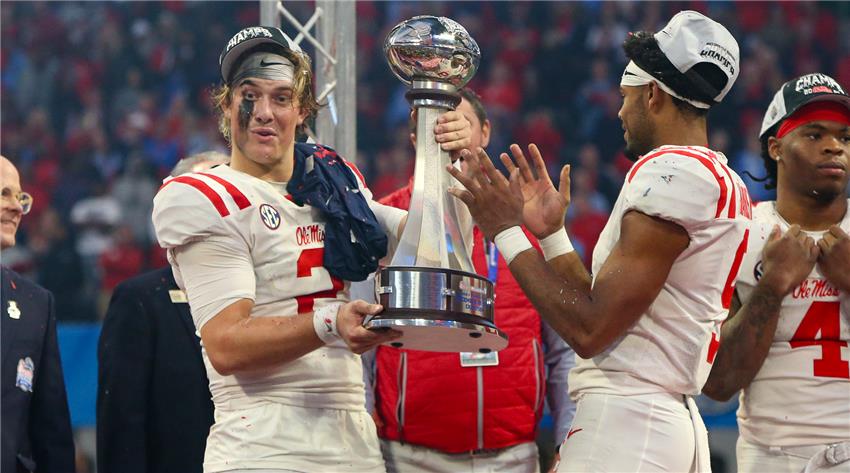
An In-Depth Examination of the NFL Draft Framework
The NFL Draft is a cornerstone event in professional football, serving as the primary pathway for college players to join NFL teams. This annual event is the culmination of months of scouting, analysis, and strategic planning by teams across the league.
The draft is a vital process for both teams looking to improve and athletes aspiring to take the next step in their careers. This article will provide a detailed look into the mechanics of the NFL Draft, from its history to the draft day itself.
After gaining a better understanding and grasping it all works and where players fit in within the whole process, it’d probably be a good idea to jot down a few names that catch your attention and consider placing a bet on them. And, if you're not sure where to place your wagers, sign up with AussieBonuses.com where you’ll find a variety of operators to choose from, many offering great sign-up bonuses too.
But before we get ahead of ourselves, let's dive in and take an in-depth look into the mechanics of the NFL Draft, from its history to the draft day itself.
The Evolution of the NFL Draft
The NFL Draft dates back to 1936, and though it began as a straightforward selection process, it has evolved into a much more complex, highly anticipated event theses. In its early years, the draft simply allowed teams to select players based on their needs. However, the league’s expansion and increased fan interest have turned it into a media spectacle, now broadcast live with millions of viewers.
One of the most significant changes came in 1967 with the introduction of the common draft, which merged the AFL and NFL drafts, simplifying the process for teams and players. Since then, various technological advancements and rule changes have further refined the draft, including the addition of televised draft events and analytical tools that help teams make more informed decisions.
Eligibility Criteria for College Players
To be eligible for the NFL Draft, players must meet specific criteria, most notably having left high school at least 3 years before joining an NFL team This rule is intended to allow players to develop their skills during their college careers before competing at the professional level. Players either complete their college eligibility or declare themselves eligible for the draft early. Early declarations can impact a player's draft stock, as their readiness to compete at a professional level is a key consideration for NFL teams. Despite pressure for change, as well as other significant NFL rule changes in recent years, this is one thing the authorities seem to be unwilling to budge on.
Pre-Draft Process: Scouting and the Combine
Once eligible, players enter the pre-draft phase, where they undergo rigorous evaluation through scouting and combines. NFL scouts attend college games, review game tapes, and conduct interviews to assess players’ talents. This stage is crucial for determining where a player may fall in the draft.
Combines, in particular, are pivotal in the pre-draft process. These events bring together top college prospects, where they participate in drills and physical tests to showcase their abilities. NFL teams use combined results to assess prospects' athletic performance, including their speed, agility, and strength, which helps teams create a comprehensive profile for each player.
Determining the Draft Order
The draft order is determined based on a team's performance in the previous season. Teams with the worst records receive the earliest picks, ensuring a balance of talent distribution throughout the league. This format encourages parity by giving struggling teams the opportunity to rebuild with top-tier talent.
For teams that didn’t make the playoffs, the draft lottery adds an element of unpredictability. Furthermore, the draft order can be affected by trades, with teams moving up or down the order to position themselves for desired players.
The Draft Day Process
Now for the exciting part. Draft day is a highly anticipated event for both teams and players. It begins with the formal announcement of the draft order, followed by teams taking turns to make their picks. Each team is allotted a specific amount of time to make its selection, adding time pressure to the decision-making process.
As each player is selected, emotions run high. Teams aim to make strategic picks that align with their long-term goals. The stakes are immense, with each pick having the potential to alter the future of the team and the league.
The Significance of Draft Picks
Each draft pick represents a calculated risk, with teams investing significant resources into evaluating and selecting the right players. A successful pick can immediately transform a team, while a misstep can have long-lasting consequences. Whether a team is looking for a star quarterback, a key defensive player, or depth in various positions, every choice has the potential to make or break the team’s prospects for the coming season.
Post-Draft Phase: Contracts and Rookie Camps
After the draft concludes, the journey for the newly selected players gets started. The next steps include signing contracts and attending rookie camps. These contracts set the terms of a player’s career, covering salary, bonuses, and other incentives. Rookie camps are designed to provide new players with an opportunity to adjust to the NFL’s fast-paced environment. This is where players begin to integrate with their new teams, hone their gameplay, and demonstrate their readiness to contribute on the field.
The Impact of the NFL Draft on Teams and Players
The NFL Draft significantly impacts both teams and players. For teams, the draft provides an opportunity to build a competitive roster by adding fresh talent. A well-executed draft can turn a struggling team into a real contender. For players, the draft is a life-changing moment, marking the start of their professional football careers. The NFL Draft is also a fan spectacle, as fans eagerly watch to see how their favorite teams will shape up in the upcoming season.
In short, the NFL Draft plays an essential role in shaping the future of the league. It ensures that talent is distributed evenly across teams, maintaining competitiveness and excitement. The draft is a strategic event where teams can secure game-changing players, and for athletes, it is the moment when their dreams of playing professional football come to fruition
